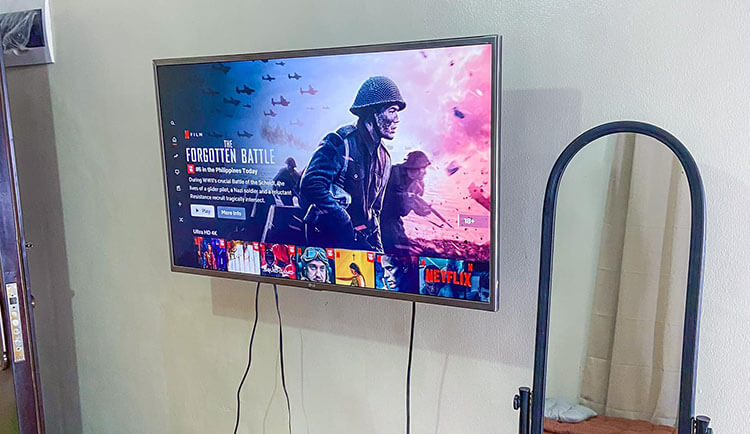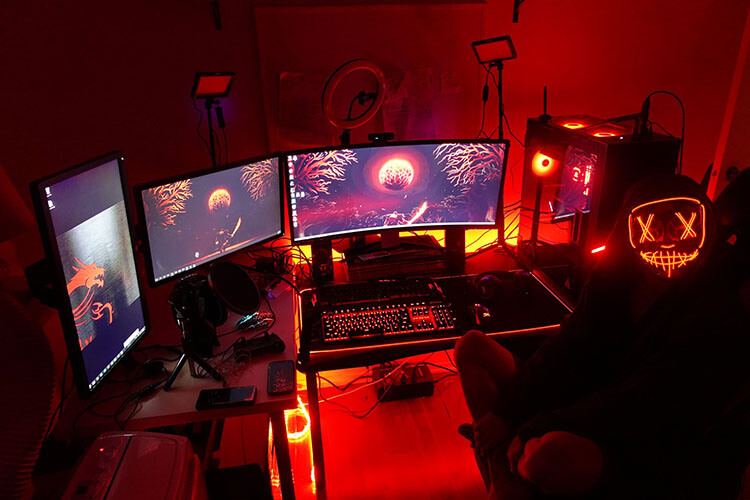For years, console gamers have debated whether a television or computer monitor is better for their gaming needs. At first glance, the option was clear: TV was the obvious pick for casual console gamers, while the gaming monitor was the one for serious competitors.
Now, for the gamers who specialize in classic or retro games—you know, the ones you can buy at https://theoldschoolgamevault.com/—a smaller TV is widely regarded as the only way to play. That is primarily due to the fact that retro games were made for the smaller, primitive CRT TVs of their time.
Getting a smaller or larger television is entirely up to your game type & your needs. Next-generation consoles from Sony and Microsoft provide 120 fps gaming in breathtaking 4K resolution, elevating the significance of that discussion.
You need a suitable screen to get the most out of these enhanced performance possibilities. A 4K TV with a refresh rate of just 60 frames per second is no longer enough. makers are working hard to provide a flood of high-performance TVs and monitors that support the new HDMI 2.1 standard, reigniting the argument.
Advantages of Smaller Television for Gaming

Portable and simpler to set up, smaller TVs are the way to go.
Games benefit significantly from smaller, more portable televisions. Buying a more compact TV is another way to reduce the clutter at home.
Televisions with smaller screens take up less room.
Gaming TVs benefit significantly from the reduced footprint of smaller screens. They won’t hog much room on a shelf or in a cupboard. In addition, they may be moved about with less effort.
A smaller TV also means a smaller price tag.
Because of their lower price, smaller televisions are a perfect choice for thrifty gamers. In addition, smaller TVs are more space-efficient, making them perfect for cramped quarters.
It’s much simpler to locate a suitable spot for a smaller TV.
Gaming is a fun way to kill time, and smaller TVs are simpler to store. There’s a wide variety of game consoles out there, each with its game catalog. There is a console on the market that will suit the needs of both casual and serious gamers.
Disadvantages of Smaller Television for Gaming
- The size of the Smaller TV is the biggest con for gaming. You won’t be feeling the game to your core because the items are so tiny to interact with.
- Immersiveness is also a drawback of smaller TV for gaming. The feels and thrills are less and less in smaller TV.
- Less support and service options. In the case of servicing and support-related issues, you won’t be getting better than the bigger television.
Advantages of Bigger Television for Gaming
- If your TV is too tiny, you may have to strain your eyes to view the screen and may miss some of the action. A bigger screen may help you feel like you’re part of the action.
- A large-screen television will provide a more cinematic experience while watching your favorite programs and movies. Seeing a movie on a little screen would ruin the experience, right? There are too many nuances to be overlooked. This is something more to think about when deciding on a television.
- If you have a huge family or prefer to host parties, a big screen is also a must-have. You won’t have to crowd around the TV just to watch it, and everyone can see it from a comfortable distance. If you want to play video games as well, you may sit farther away from the screen without sacrificing immersion.
- Further, if you’re in the market for a high-resolution TV like the ones we have in our budget-friendly 4K TV offers, a bigger screen is the way to go so that you can enjoy the crisp, clear images. Because of this, 4K resolution is wasted on a smartphone screen.
Disadvantages of Bigger Television for Gaming

- When reading text on the internet, we often increase the size of the text using the browser’s text zoom feature (typically between 110% and 120%), or we physically move closer to the screen if the writing is tiny.
- Because it’s harder to look around and keep track of everything on a big-screen TV, video games have had to adapt to accommodate the change.
- It would be more practical to use the optical mouse standing up. It works great on the leather sofa and the supple leather armrest that I have tried it on. This, however, is something that my wife has not yet mastered. I also have a Gyration air mouse, but I seldom use it because of the awkward way you have to wave it.
- It’s hard to find a good spot for both a webcam and a microphone. The ones available need a 2-foot wired extension from your desk chair. Because you’re free to move around the sofa, a telescopic webcam isn’t an option. I have a microphone with a 20-foot extension wire for use with OK Google and other voice-activated services, but I seldom use it since I keep it stashed in a drawer.
A competitive gamer’s ideal television screen size
Taking into account the optimal viewing distance of 4-5 feet for 1080p screens, a 32- to 40-inch TV is recommended for competitive gaming. The optimal TV size is extremely subjective and depends on a number of factors, including viewing distance and personal choice.
What’s the ideal screen resolution for a game console?
TVs between 40 and 60 inches are ideal for modern gaming consoles like the PlayStation 5 and Xbox Series X, which support 4K resolution and can give you up to 120 frames per second, while TVs between 32 and 40 inches are ideal for older consoles like the PlayStation 4 and Xbox One, which support 1080p screen resolution.
In a showdown between a computer display and television, which is better for playing video games?

The doors, how are they rated? We’ll sum up the main points, provide our opinion, and offer some suggestions in the following paras.
High Dynamic Range (HDR) and Picture Quality
HDR is better supported by TVs than monitors, and the TVs provide better viewing experiences at cheaper prices. For this reason, we opted for televisions, however, if you’re ready to shell out more money for a monitor, you can get an even higher resolution.
Lag of Input
In this respect, monitors are unrivaled. Affordability is still an issue with high-end gaming TVs, despite their rapid reaction times and high refresh rates. Modern gaming monitors, even those with IPS panels, have very little input latency, making them the clear victor.
Synchronization and high refresh rates
A gaming monitor is an obvious option for those who wish to play with a high refresh rate and take advantage of framerates exceeding 60. Even the ones that do have greater input latency than monitors, and most TVs with high refresh rates only utilize them for interpolation and not raw visual performance.
Both televisions and monitors may use variable refresh rate technology, however, monitors are far more cost-effective. Displays that support FreeSync and G-Sync still command a substantial premium over non-supporting displays, so if you’re going to shell out the extra cash for one, you may as well put it to good use.
Pricing
If you’re a competitive gamer and don’t want to spend a lot of money but yet want a good gaming experience, a gaming monitor is the way to go.
As far as gaming devices go, monitors are clearly superior to televisions. One may argue that television is the better option if seeing content is more important than actually playing a game. In any case, with the advent of IPS panels, HDR, and wide viewing angles in today’s gaming monitors, it’s evident that gaming displays are the way to go.
Comfort
Last but not least, TVs win hands down when it comes to convenience since their bigger viewing distances and broader viewing angles make them much more comfortable to watch for longer periods of time. Televisions are used for couch gaming and local multiplayer since they provide a superior experience.
Conclusion
I wish I could provide a simple, general suggestion, but that’s not feasible in this case. One size does not fit all when it comes to televisions. Your requirements and tastes are the deciding factors.
